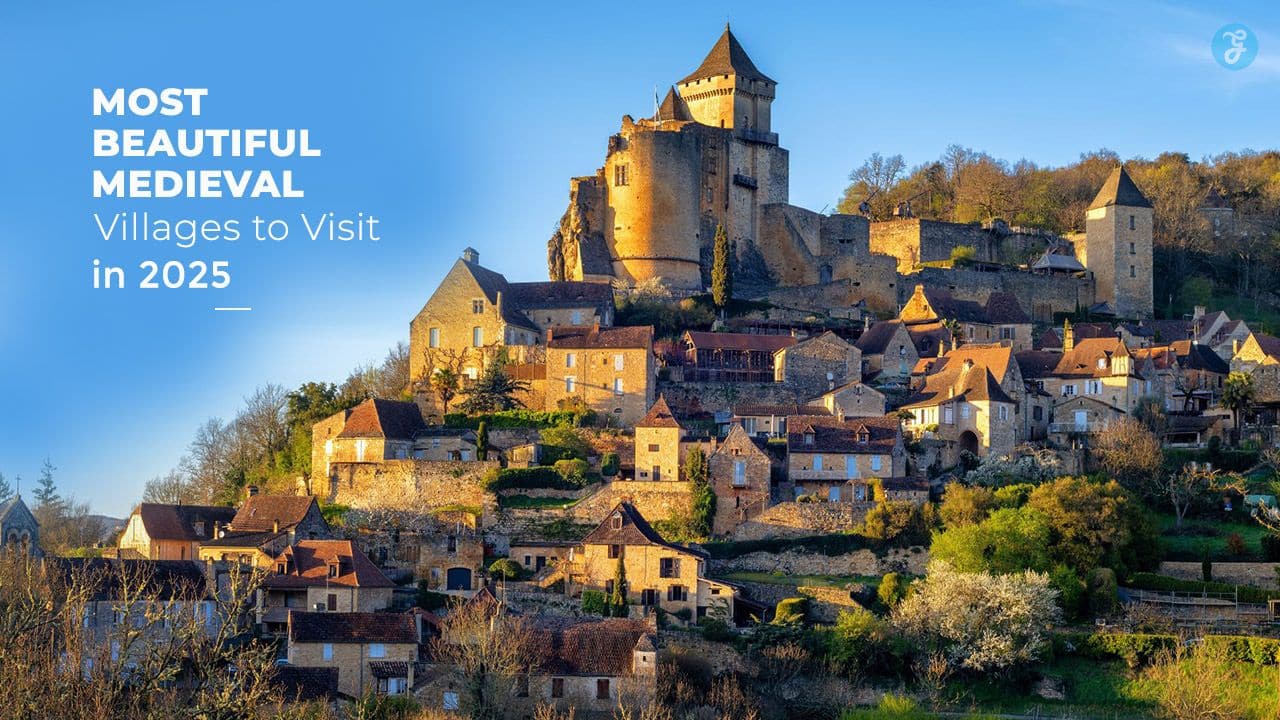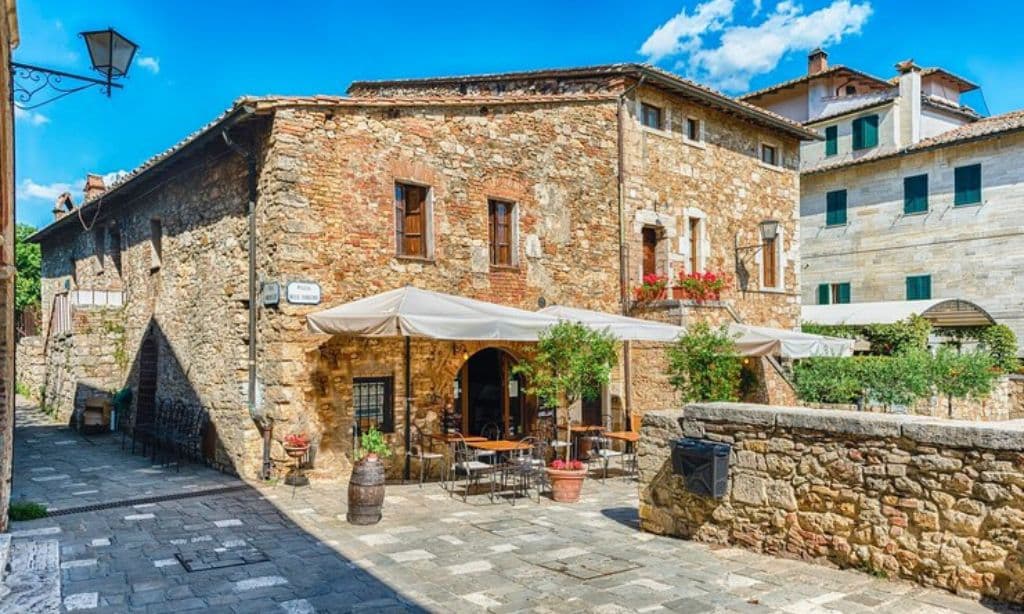Medieval villages offer a window into the past, showcasing stunning architecture, rich traditions, and enchanting landscapes that transport visitors back in time.
These villages, scattered across Europe, boast preserved stone buildings, cobblestone streets, and a charm that feels untouched by modernity.
This guide highlights the most beautiful medieval villages to visit in 2025, blending historical significance with travel practicality. Whether you’re a history enthusiast, a photographer, or simply a traveler seeking unforgettable experiences, these destinations are must-visits.
What Makes Medieval Villages Unique?
A Step Back in Time: Preserved Architecture
Medieval villages are defined by their iconic architecture—stone fortresses, ancient churches, and narrow streets. These structures reflect the ingenuity of past civilizations and their ability to adapt to their environment while creating functional yet beautiful spaces. Exploring these villages allows travelers to feel as though they’ve stepped into a living history book.
Cultural Richness and Traditions
Medieval villages are more than their architecture; they are living museums. Visitors can immerse themselves in vibrant festivals, local crafts, and cuisines passed down through generations. Many of these villages host annual events that reenact historical moments, offering an interactive way to experience the past. For example, Obidos’ Medieval Festival transports visitors to the 13th century with costumed performers and traditional feasts.
Ideal Destinations for History Enthusiasts and Photographers
Every corner of a medieval village tells a story. From castle ruins to hidden courtyards, these villages are a paradise for those who love history and photography. The unique lighting, textures, and scenic backdrops make them ideal for capturing timeless beauty and creating unforgettable memories. Imagine standing atop Rocamadour’s cliffs or photographing Hallstatt’s serene lakeside views—each spot is a masterpiece waiting to be captured.
Top 10 Most Beautiful Medieval Villages to Visit in 2025
Let’s take a look
1. Rocamadour, France
Perched dramatically on a cliffside, Rocamadour is a sacred pilgrimage site with breathtaking views. The village is renowned for its religious significance, drawing visitors from around the world to explore its chapels and sanctuaries carved into the cliff. Its strategic location also made it a defensive stronghold in medieval times.
- Key Attractions:
- The Sanctuary of Rocamadour.
- The Chapel of Our Lady.
- Panoramic vistas of the Alzou Valley.
- Best Time to Visit: Spring and early fall when the weather is mild.
Quick Facts Table:
| Metric | Details |
| Location | Occitanie, France |
| Key Features | Cliffside village, chapels |
| Best for | Pilgrims, photographers |
2. San Gimignano, Italy
Known as the “Town of Fine Towers,” San Gimignano is famous for its skyline dotted with medieval towers. The village’s well-preserved buildings and streets offer a glimpse into the wealthy merchant class of the Middle Ages. Visitors often praise its medieval ambiance, which has remained largely unchanged for centuries.
- Key Attractions:
- Torre Grossa, the tallest tower.
- Piazza della Cisterna, a vibrant square.
- The Collegiate Church of San Gimignano.
- Best Time to Visit: Late summer for pleasant weather and fewer crowds.
Quick Facts Table:
| Metric | Details |
| Location | Tuscany, Italy |
| Key Features | Towers, historic squares |
| Best for | Architecture lovers |
3. Eze, France
This hilltop village overlooks the sparkling Mediterranean Sea and exudes charm with its cobblestone lanes. Its rich history dates back to the 14th century, and its well-maintained gardens and structures make it a gem on the French Riviera. Visitors often indulge in perfume workshops, a tradition that links Eze to the perfumery industry.
- Key Attractions:
- Jardin Exotique, a botanical garden with stunning views.
- Eze’s medieval church.
- Perfume workshops at Fragonard.
- Best Time to Visit: April through June for blooming flowers and fewer tourists.
Quick Facts Table:
| Metric | Details |
| Location | French Riviera, France |
| Key Features | Hilltop views, gardens |
| Best for | Nature and culture lovers |
4. Monsaraz, Portugal
A walled village in Portugal’s Alentejo region, Monsaraz is a tranquil escape steeped in history. Its strategic location near Alqueva Lake offers stunning vistas, while its whitewashed buildings exude a timeless elegance. Local artisans often display their crafts in open-air markets, adding vibrancy to the serene atmosphere.
- Key Attractions:
- Monsaraz Castle.
- Views of Alqueva Lake.
- Local wine tasting.
- Best Time to Visit: Autumn for cooler weather and vibrant landscapes.
Quick Facts Table:
| Metric | Details |
| Location | Alentejo, Portugal |
| Key Features | Walled village, castle |
| Best for | Relaxation and history |
5. Alberobello, Italy
Alberobello is renowned for its unique trulli houses, conical-roofed stone dwellings that date back centuries. This UNESCO World Heritage Site offers a surreal experience as visitors stroll through its labyrinth of distinctive whitewashed buildings. Visitors often enjoy local pastries and handmade goods in family-owned shops.
- Key Attractions:
- Rione Monti, a district filled with trulli.
- Trullo Sovrano, the largest trullo.
- Local artisan shops.
- Best Time to Visit: Spring for blooming landscapes and pleasant weather.
Quick Facts Table:
| Metric | Details |
| Location | Puglia, Italy |
| Key Features | Unique architecture |
| Best for | Cultural exploration |
6. Hallstatt, Austria
Nestled beside a tranquil lake, Hallstatt’s medieval charm and natural beauty captivate visitors. The village’s history as a salt-mining hub adds an intriguing layer to its picturesque scenery. Guided tours through the salt mines offer an educational and fascinating glimpse into its historical importance.
- Key Attractions:
- Hallstatt Salt Mine.
- The picturesque Old Town.
- Hallstatt Skywalk for panoramic views.
- Best Time to Visit: Summer for outdoor activities or winter for a snow-covered wonderland.
Quick Facts Table:
| Metric | Details |
| Location | Upper Austria, Austria |
| Key Features | Lakeside village, history |
| Best for | Nature and photography |
7. Cesky Krumlov, Czech Republic
A fairy-tale village with UNESCO World Heritage status, Cesky Krumlov is a visual delight. Its blend of Gothic, Renaissance, and Baroque architecture makes it a living museum of European history. The town’s riverside cafes and artisan workshops enhance the magical ambiance.
- Key Attractions:
- Cesky Krumlov Castle.
- The Old Town Square.
- Vltava River rafting.
- Best Time to Visit: Fall for vibrant foliage and fewer tourists.
Quick Facts Table:
| Metric | Details |
| Location | South Bohemia, Czech Republic |
| Key Features | Castle, scenic river |
| Best for | Heritage and adventure |
8. Obidos, Portugal
Encircled by medieval walls, Obidos is a well-preserved village with a rich cultural scene. Its charm is enhanced by its bookstores, artisanal shops, and the annual Medieval Festival that brings history to life. During the festival, visitors can enjoy jousting tournaments and traditional banquets.
- Key Attractions:
- Obidos Castle.
- The annual Medieval Festival.
- Quaint bookstores and cafes.
- Best Time to Visit: Summer to experience the Medieval Festival.
Quick Facts Table:
| Metric | Details |
| Location | Central Portugal |
| Key Features | Festivals, castle |
| Best for | Culture and events |
9. Carcassonne, France
Carcassonne is a fortified city that feels like a step into a medieval storybook. Its impressive double-walled fortifications and intricate network of streets offer endless exploration. The city frequently hosts medieval-themed events, complete with costumed guides and reenactments.
- Key Attractions:
- La Cité de Carcassonne.
- Basilica of Saints Nazarius and Celsus.
- Medieval-themed tours.
- Best Time to Visit: Spring for mild weather and fewer crowds.
Quick Facts Table:
| Metric | Details |
| Location | Occitanie, France |
| Key Features | Fortifications, basilica |
| Best for | History enthusiasts |
10. Siena, Italy
Siena is celebrated for its medieval architecture and vibrant cultural traditions. The village’s spirit comes alive during the Palio di Siena, a historic horse race that has been a tradition since the 17th century.
- Key Attractions:
- Piazza del Campo.
- Siena Cathedral.
- The Palio di Siena horse race.
- Best Time to Visit: July or August during the Palio.
Quick Facts Table:
| Metric | Details |
| Location | Tuscany, Italy |
| Key Features | Architecture, festivals |
| Best for | Culture and tradition |
Planning Your Visit to Medieval Villages
Travel Tips for Visiting Medieval Villages
- Wear Comfortable Shoes: Cobblestone streets can be tricky to navigate. Sturdy footwear ensures a pleasant walking experience.
- Timing is Key: Visit early in the day to avoid crowds and capture the best lighting for photographs.
- Respect Local Customs: Learn about the village’s traditions and engage respectfully to enrich your experience.
Best Times to Explore Medieval Villages
- Spring and Fall: Mild weather and blooming landscapes make these seasons ideal.
- Festival Dates: Plan your visit during local festivals for a more immersive cultural experience.
Accommodation Options
- Boutique Inns: Stay within the village for an authentic experience.
- Nearby Hotels: Modern amenities paired with proximity to the villages.
- Traditional Guesthouses: Perfect for those seeking a rustic and cozy atmosphere.
Takeaways
The most beautiful medieval villages to visit in 2025 promise unforgettable experiences. From the cliffside marvels of Rocamadour to the cultural vibrancy of Siena, each village offers a unique glimpse into history.
Plan your journey, embrace the charm of these timeless destinations, and create memories that will last a lifetime.







































